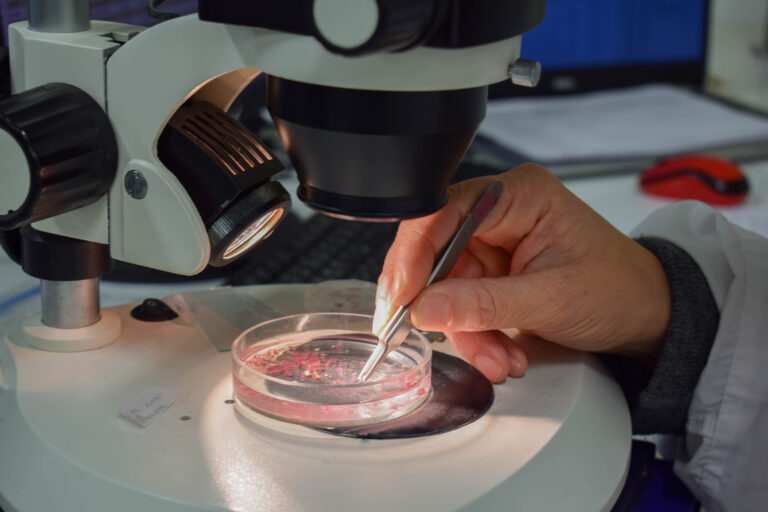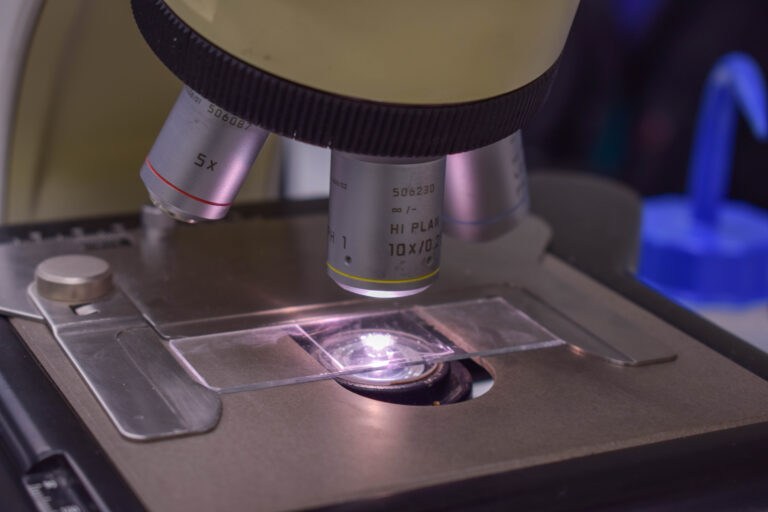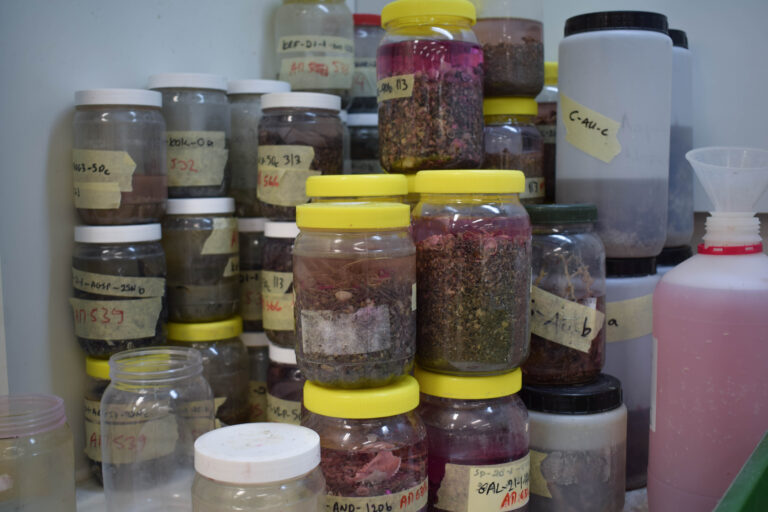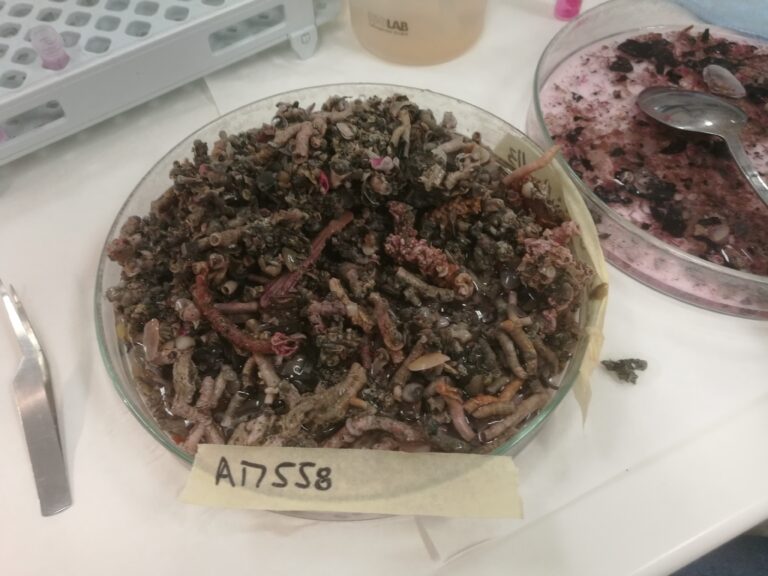The macrobenthos – animals living in or on the surface of the sea floor – is a component of the marine ecosystem particularly suited for monitoring anthropogenic impacts and disturbances. The analysis of macrobenthic communities is a core component of many national and international environmental monitoring schemes, e.g. the EU Water Framework directive.
Within the context of aquaculture monitoring, the analysis of the macrobenthos is used to estimate the impact of the fish farms on the surrounding marine habitats, biodiversity and ecosystem functioning. Macrobenthic species are often excellent indicators for the presence of increased organic matter (e.g. fish feed, pellets, feces).
By calculating ecological quality indices based on the macrofaunal communities, the level of impact on the environment by the fish farm can be detected, and measures can be taken accordingly.
Our research group performs analyses of the composition and ecological status of the zoobenthos of soft substrates in marine and lagoonal environments and calculates the respective indices required by the client. We also perform analyses for more research-oriented projects where we profit from the longstanding expertise of the benthic ecologists in our group.






